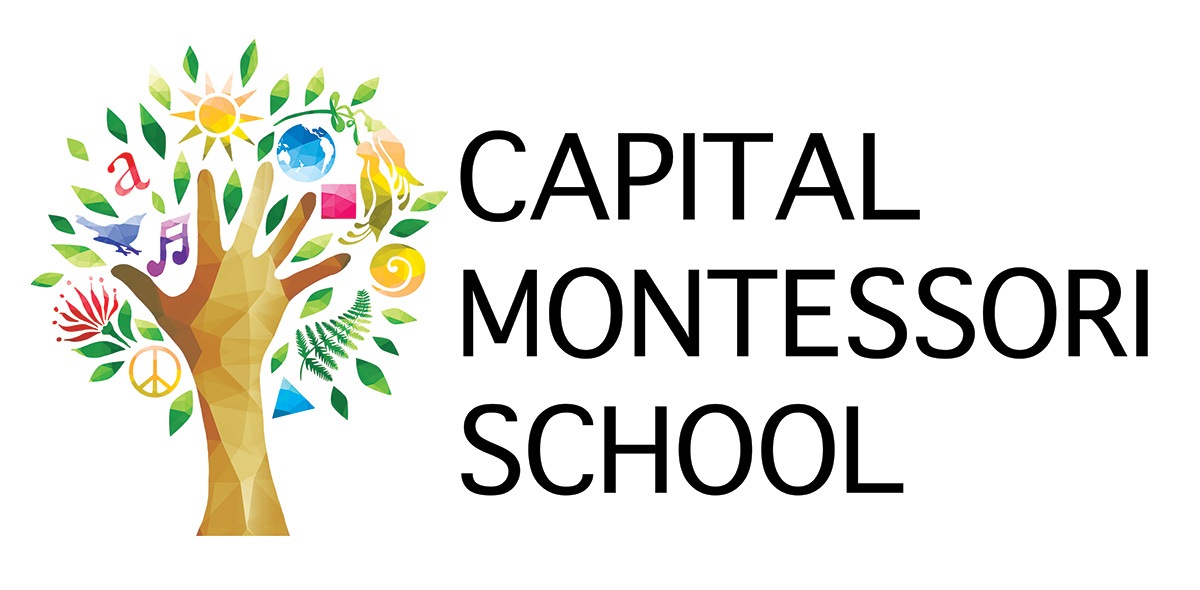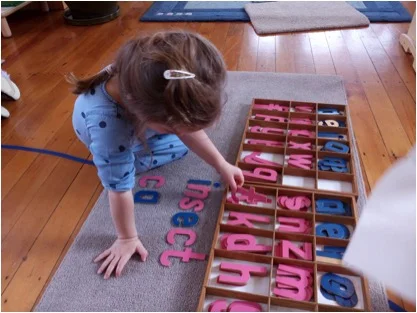“Language is an instrument of collective thought.” – Maria Montessori
Language – an arbitrary system of vocal and written symbols, created by humans with the purpose to interact with other members of their social group and communicate, because communication is a very strong human tendency. Words have meaning, and we use them to share and communicate our emotions, thoughts and experiences, and to work together.
The origin of language is regarded by some as ‘the hardest problem in science’, mostly due to the lack of empirical evidence and the amount of speculation over how and where language developed. It’s generally believed that language developed gradually, from primal communication among humans – partly gestural, partly vocal. It took quite some time before groups of people created sets of vocabulary specific to their shared life experiences. They were in agreement that a word represents something specific – they agreed on that ‘ collective thought’.
Reading was not initially a commonly learned skill.
Until the invention of print, the skills of writing and reading were typically developed and cultivated by people who needed to make records – clergy, vendors and traders. It wasn’t until the 1400s when the printing press was invented that writing took off and made it possible for people to access the written word more easily. This resulted in the explosion into reading.
Over time, English has developed as quite a complicated language to record and read. It has 26 symbols in its alphabet, which make 43 phonemes – as the symbols can be combined to represent some phonemes like ‘ph’ to represent ‘f’, and like ‘th’ to represent the sound.
Language Acquisition
Early language is mostly acquired in the family environment, supported by the exposure, enrichment and encouragement in the wider family circle. As humans, we adopt and assimilate into our own culture, partially through the language that we acquire effortlessly in the first years of our life.
Our natural human tendency for communication means that young children quickly understand that learning the language spoken by the people around them, gives them a way to ensure their needs will be met. They are the most attentive listeners, eagerly collecting and storing information, sounds and meaning from the earliest moments of their lives.
This is also why it is so critically important to provide a rich, authentic, responsive language environment to young children. They are open for language and will learn as many languages as they are exposed to, from birth. The condition is that they are directly exposed to the live language, rather than to limited ‘lessons’. It is the natural tendency to communicate independently that opens their absorbent mind. The child is able to acquire a fully formed, grammatically correct, progressive language that they have absorbed instinctively and unconsciously.
In order to develop their skills and build on what they have absorbed, it’s important that their language ability is constantly enriched with opportunities to have lots of fun, experiment with the order, meaning and power of words and increase their confidence in the language they already have.
Learning to Read
A simple definition of reading is to be able to decode and interpret someone else’s thoughts, encoded by an agreed ‘code of symbols’. It’s a complex task. The reader first needs to be able to analyse the symbols, and then synthesise them (put them all together) into a coherent word. Reading a phrase is a synthesis of words. Reading a story is a synthesis of phrases.
In the Montessori 3-6 classroom you’ll find many materials and activities that give children the opportunity to acquire and practice those skills. Sandpaper Letters give the sensorial impressions of sounds, exposing a child to the shape, sound and tactile experience of the letters of the alphabet. From there, children build a rich knowledge of vocabulary to associate with sounds, and practice, categorise and organise them for future recognising in reading.
Reading practice starts with decoding the names attached to known objects in the environment – for example, book, table, tree, chair, ball. The word ‘ known’ is key here. Known objects create a sense of security and familiarity for the child. Decoding symbols that are attached to known objects sets them up for success and creates an immediate, concrete relationship between the name and the object.
Reading takes real preparation and effort
Learning to read is a rite of passage that brings with it great power and independence. But it requires a lot of preparation and hard work on the part of the child.
That preparation starts well before your child enters school. Much like writing, it starts within the family, when you read to your child. Give them warmth, generosity and love during your reading time, show them that you really want to be there, with them. The stories you share, the voice you use, opens them up to understand that reading means discovering new, exciting information, and that is all the motivation they need! Reading aloud to children lays the foundation for their want to be independent and learn this amazing skill for themselves.
Before reading can happen, the eyes need to be prepared for tracking and spotting minute differences in the characteristics of observed objects. These skills are learnt and practiced through the Practical Life and Sensorial activities in the classroom.
The mind needs to be prepared through the sound games (listening for sounds which helps analyse words into the component sounds), Sandpaper Letters and the Moveable Alphabet.
In our classrooms, we provide a never-ending supply of new reading material to children once they emerge as early readers. One word slips, phrase slips, flag labels, names of the qualities of our classroom sensorial materials, the tastes of the tasting bottles, and messages for them to read. Children read the names of labels in the classroom environment all the time, every day.
The Keys to Reading
Montessori materials follow a progression. We start the child reading just one noun words, then phrases, sentences, then we introduce commands – actions for them to ‘read and do’ – and a lot of fun! Through these activities the children learn the ‘keys to reading’ – their phonetics, phonogram and puzzle (or sight) word materials.
With the ‘keys to reading’ on board our children then go on an adventure of the ‘function of words’ and learn how adjectives describe nouns, how conjunctions connect objects and thoughts together into long messages – some as long as our longest number rod!
We follow this area with the work into the ‘word study’ – rhyming words, compound words, contraction, homonyms, singular and plural – all done orally to begin with. Sentence reading comes through reading analysis, with the child acting out what is written. All this is needed for the child to achieve the skill of ‘total reading’. With comprehension of meaning, and the recognition of style and emotions in reading material, total readers can understand how the author can subtly express messages.
A well-prepared Montessori classroom provides endless opportunities to build and practice the skills needed for reading, in a natural, positive and fun way. If we engage children in the fullness of reading when they are young, we give them a springboard for the enjoyment of reading throughout their life.



